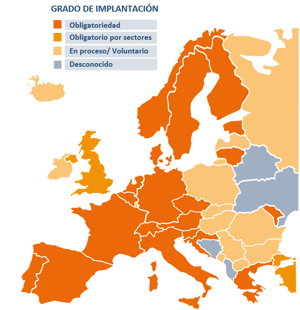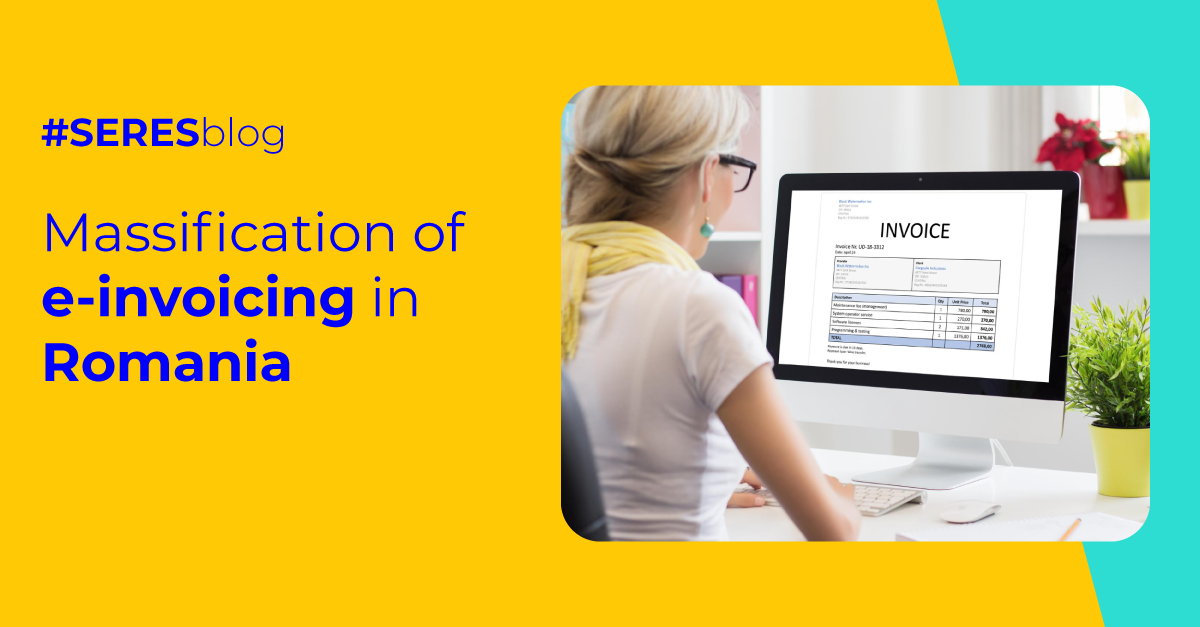How has e-invoicing evolved in Europe?
The European Digital Agenda has been promoting eInvoicing as a priority technological development within the common market for many years, as it is considered a driving force which facilitates internal relations between the different countries.
 As a result, the European Union is promoting the use of eInvoicing in the member states through its Directive 2014/55/EU of the European Parliament and of the Council and, consequentially, from 18 April 2019, a common mandatory format will be established for eInvoicing in European B2G relations.
As a result, the European Union is promoting the use of eInvoicing in the member states through its Directive 2014/55/EU of the European Parliament and of the Council and, consequentially, from 18 April 2019, a common mandatory format will be established for eInvoicing in European B2G relations.
Due to this legislation, EU countries are updating the eInvoicing situation through their respective tax authorities. Examples of this are Portugal and Poland which have been promoting eInvoicing and, in 2019, will make its use mandatory for B2G.
The first country in the EU to formalise eInvoicing was Denmark in 2005, followed by the rest of the Nordic countries some years later. After the standardisation of the use of eInvoicing in the north of Europe, the next countries to implement the mandatory use of B2G e-invoicing were Austria and Italy in 2014. Similarly, Italy would soon become the first European Union country to extend this requirement to all B2B relations.
 The following year, in 2015, Spain and Slovenia also adopted the mandatory use of eInvoicing in B2G relations. As in the case of Italy, Spain has also promoted B2B eInvoicing. In this case, since July 2018, this has been mandatory for the subcontractors of the companies supplying goods and services to the public administrations who invoice more than €5,000.
The following year, in 2015, Spain and Slovenia also adopted the mandatory use of eInvoicing in B2G relations. As in the case of Italy, Spain has also promoted B2B eInvoicing. In this case, since July 2018, this has been mandatory for the subcontractors of the companies supplying goods and services to the public administrations who invoice more than €5,000.
To date, most of the European Union and the countries that surround it on the European continent have established legislation that governs the use of the eInvoicing and promotes its use due to the benefits for the common market. Examples of this are: Belgium, France, Germany, etc.
All these changes in the European Union have led to non-EU countries such as Andorra or Iceland promoting the use of eInvoicing in their business sectors and institutions. As well as this promotion of its voluntary use, other non-EU countries such as Moldavia have established it as mandatory for a certain group of companies. In Turkey it is mandatory for some sectors of its national economy.
The main new development compared to previous years is the closeness of Directive 2014/55/EU, which forces the entire Union to become a part of this technological change (this is currently being phased in across the different countries, in both Europe and the common market), together with the evolution of these European states towards establishing B2B relations.
Download our Whitepaper
SERES has written a White Paper on “Electronic Invoicing in Europe” which sets out in detail the progress that is expected for eInvoicing in Europe (Albania, Germany, Andorra, Austria, Belgium, Belarus, Bosnia and Herzegovina, Bulgaria, Cyprus, Croatia, Denmark, Slovakia, Slovenia, Spain, Estonia, Finland, France, Greece, Hungary, Ireland, Iceland, Italy, Kosovo, Latvia, Lithuania, Luxembourg, Macedonia, Malta, Moldova, Monaco, Montenegro, Norway, The Netherlands, Poland, Portugal, the United Kingdom, the Czech Republic, Romania, Serbia, Russia, Sweden, Switzerland, Turkey and Ukraine).
It is the perfect guide to understand what your company is facing if it wants to use eInvoicing globally.



